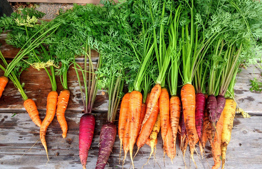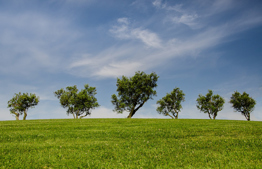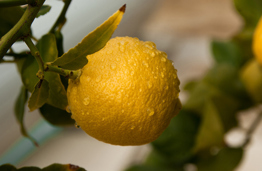Intermediate Plant Classification as Vegetables or Trees

While most plants fall into neat categories as trees or vegetables, some are on the seam and have characteristics of both. This chart classifies such intermediate plants, which has bearing on the laws of orlah, berachot and kila’im. Hilchot Ha'aretz, 133.
|
Fruit/Vegetable |
Scientific Name |
Halachic Class |
Reason |
|
Artichoke |
Cynara cardunculus |
Vegetable |
Grows back from the root. |
|
Babaco |
Carica |
Doubt whether |
Perennial with a hollow trunk; |
|
Banana |
Musa |
Vegetable |
Grows back from the root. |
|
Blackberry |
Rubus eubatus |
Vegetable |
Grows back from the root. |
|
Blueberry |
Vaccinium sect. Cyanococcus |
Tree |
Perennial |
|
Boysenberry |
Rubus ursinus x |
Vegetable |
Hybrid between European raspberry, European blackberry, American dewberry, and loganberry. |
|
Cranberry |
Vaccinium oxycoccus |
Doubt whether fruit or vegetable. |
Perennial but grows back from the root. Does not bear fruit within a year, but is shorter than 3 tefachim. |
|
Eggplant |
Solanum melongena |
Vegetable |
Does not last for three years; |
|
Goji berry |
Lycium barbarum and Lycium chinense |
Doubt whether fruit or vegetable |
Perennial but bears fruit within a year. |
|
Golden berry |
Physalis |
Doubt whether |
Perennial but bears fruit within a year. |
|
Hot pepper |
Capsicum annuum |
Vegetable |
Does not last for three years; |
|
Loganberry |
Rubus loganobaccus |
Vegetable |
Hybrid between blackberry and raspberry. |
|
Mint |
Mentha |
Vegetable |
Grows back from the root.[2] |
|
Monk fruit |
Siraitia |
Doubt whether |
Perennial but bears fruit within a year. |
|
Papaya |
Carica papaya |
Doubt whether |
Perennial with a hollow trunk; |
|
Passionfruit |
Passiflora edulis |
Doubt whether |
Perennial but bears fruit within a year. |
|
Pineapples |
Ananas comosus |
Vegetable |
Grows back from the base of the plant and sometimes from the trunk, produces fruit in its second year, exists for three to four years abroad (Hawaii), and diminishes in quality and quantity from year to year.[4] |
|
Pitahaya |
Hylocereus undatus |
Fruit |
Perennial |
|
Raspberry |
Rubus idaeus |
Vegetable |
Grows back from the root. |
|
Sabra |
Opuntia ficus-indica |
Tree |
Perennial |
|
Strawberry |
Fragaria × ananassa |
Vegetable |
Grows back from the root. |
|
Sudanese pepper |
See note[5] |
Doubt whether |
Perennial but bears fruit within a year. |
|
Tayberry |
Rubus fruticosus x R. idaeus |
Vegetable |
Hybrid between raspberry and blackberry. |
|
Tree collard, (Collard, Tree kale, Walking stick collard) |
Brassica oleracea |
Vegetable |
Can be perennial and can grow tall, yet mentioned in the Gemara as a vegetable. |
See: Orlah, Chapter 3a: What is a tree?
For additional information, see Hilchot Ha'aretz (Heb.), pp. 130–132. Also see the comprehensive article by Rabbi Yoel Friedemann "Defining trees and vegetables in halacha" in Hatorah VeHa'aretz III (5757) (Heb.); and his dissertation, "The development of the definition of trees and vegetables from Tana'itic literature through 17th-century halachic decisors" Tevet 5766, master's thesis for the Department of Talmud and Oral Law, Bar Ilan University (Heb.).
[1] In cases of doubt, one should make the blessing borei peri ha'adamah, since bedi'avad this blessing covers fruit that grows on trees (as trees grow in the ground; Shulchan Aruch, OC §206:1).
[2] The orlah prohibition does not apply to herbs. See Chapter 1 §F.5.
[3] When planting passionfruit as a living fence, even those who are stringent about orlah may eat the fruit, even if the secondary purpose is to partake in the fruit. See Chapter 4, §A.3.
[4] Chelkat HaSadeh, Zera’im I (5759) pp. 72–74 (Heb.).
[5] Sudanese pepper (pilpel sudani, as it is known in Hebrew), is not a scientific genus but rather the popular moniker in Israel for certain types of local hot peppers (generally sold as dry hot red peppers). Other commercially sold hot peppers significantly decrease in quality and quantity of yield from year to year. However, certain cultivars of hot pepper ("sudani") are used in domestic settings, some as decorative plants, and their yield is consistent and does not diminish from year to year. In such cases, the plant has questionable status.




